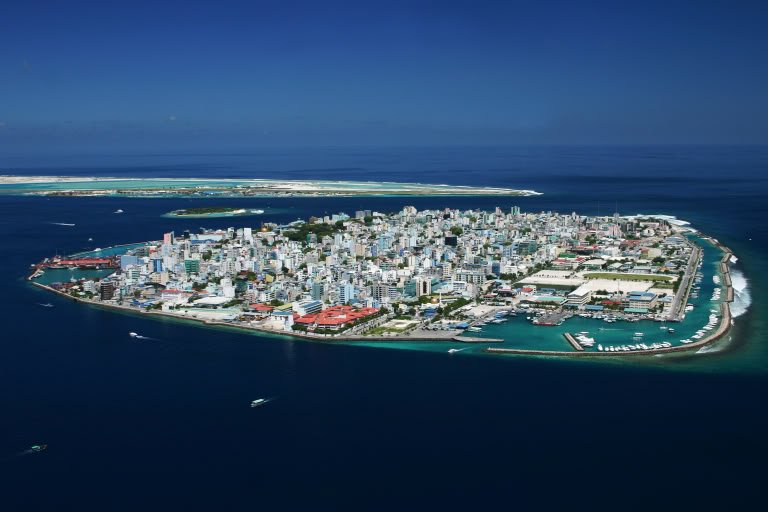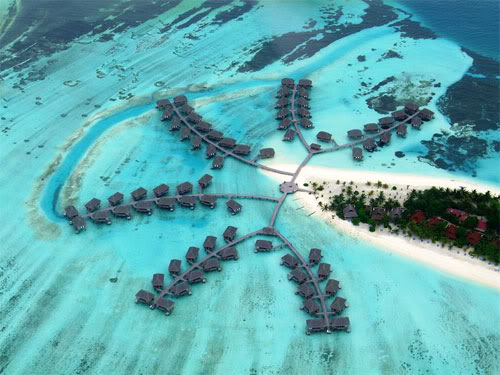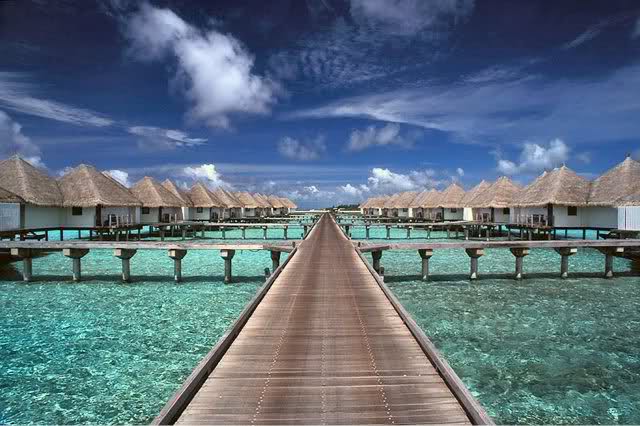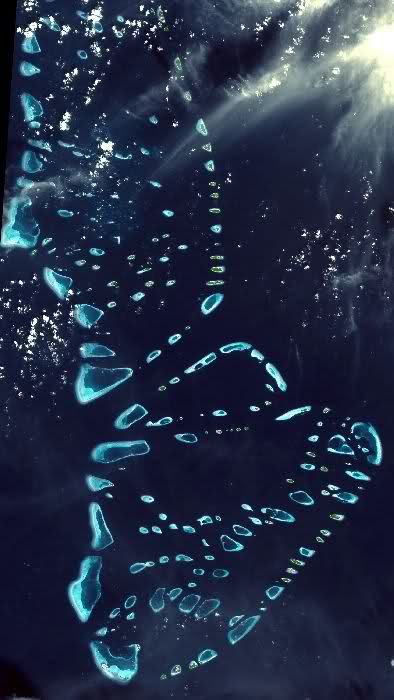Güven
Jewel of IB
- Messages
- 6,879
- Reaction score
- 1,346
- Gender
- Male
- Religion
- Islam
n. archipelago [ahr-kuh-pel-uh-goh] – a large group or chain of islands; any large body of water with many islands; the Archipelago, the Aegean Sea.

Pacific & Oceania Archipelagos
1. Once an active volcano, the idyllic Polynesian archipelago of Bora Bora is made up of the remnants of the collapsed cone, and is one of the world’s number one destinations for romantic getaways.

Located about 140 miles (230 km) northwest of the Tahitian capital, Papeete, Bora Bora was originally named Pora Pora, which means ‘first born’ in Tahitian, but documents from the 18/19th century list the island as Bolabolla and over time it seems the two names have become one.

2. The lush green cliffs of Hawaii tower high above the Pacific Ocean just under 2,000 miles from the United States coastline. Hundreds of islands, scattered over 1,500 miles, make up the archipelago chain and many still demonstrate their volcanic origins, with live lava flows and steaming rocks. Hawaii is most popular with deathwish surfers seeking some of the best waves in the world.

3. Consisting of over 3,000 islands, the entire country of Japan is an archipelago. It sits on the Pacific Ring of Fire at the juncture of three tectonic plates, making it a pretty lively country in terms of volcanic activity. Catastrophic earthquakes and tsunamis occur several times a century, with the most recent Chuetsu earthquake in 2004.

4. The Chocolate Hills of Bohol are a geological phenomenon and one of the Philippines top tourists attractions. Spread over an area of 20 square miles are 1,268 grass-covered, cone-shaped limestone mounds, the highest being about 120 meters in height, and so called as the grass turns a chocolate brown color during the dry season. Bohol is the 10th largest island of the Philippines archipelago, which comprises 7,107 islands in total.

5. The South Pacific islands of Fiji are an ever-popular tourist destination as the climate is warm and tropical most of the year. There are 322 islands in all but only 106 are inhabited, with the larger islands of Viti Levu and Vanua Levu being the most populated. The island of Vorovoro is currently home to sustainable development project Tribewanted, which is now in its third year and proving to be a huge success in ecotourism.

6. Popular with scuba divers, the island archipelago of Vanuatu is relatively small in comparison to other archipelagos with just 82 islands. Ownership of the country has changed hands many times over the years but after an independence movement in the 1970s the archipelago became the Republic of Vanautu in 1980.

7. Known to native Maoris as Aotearoa, or The Land of the Long White Cloud, New Zealand is made up of three main islands – the North Island, South Island and Stewart Island, as well as several smaller islands. Its myriad landforms make New Zealand is an exciting place, with tropical islands to the north, bubbling geysers in the sulphuric region of Rotorua, glaciers to the west of the south island and alps in the south.

8. The island nation of Palau is located about 500 miles (800 km) east of the Philippines and is one the world’s youngest. One of the beautiful islands was used in TV show Survivor, which spurred an interest in Palau as a holiday destination.

9. New Caledonia in the southwest Pacific region of Melanesia was named by intrepid explorer Captain Cook after Caledonia in Scotland, as it bore a remarkable resemble to the Highland country. Unlike many other archipelagos, New Caledonia is not volcanic but thought to be a fragment of the ancient continent Gondwanaland – the conglomeration of South America, Africa, India and Australia – and broke away from what is now Australia about 100 million years ago.


Pacific & Oceania Archipelagos
1. Once an active volcano, the idyllic Polynesian archipelago of Bora Bora is made up of the remnants of the collapsed cone, and is one of the world’s number one destinations for romantic getaways.

Located about 140 miles (230 km) northwest of the Tahitian capital, Papeete, Bora Bora was originally named Pora Pora, which means ‘first born’ in Tahitian, but documents from the 18/19th century list the island as Bolabolla and over time it seems the two names have become one.

2. The lush green cliffs of Hawaii tower high above the Pacific Ocean just under 2,000 miles from the United States coastline. Hundreds of islands, scattered over 1,500 miles, make up the archipelago chain and many still demonstrate their volcanic origins, with live lava flows and steaming rocks. Hawaii is most popular with deathwish surfers seeking some of the best waves in the world.

3. Consisting of over 3,000 islands, the entire country of Japan is an archipelago. It sits on the Pacific Ring of Fire at the juncture of three tectonic plates, making it a pretty lively country in terms of volcanic activity. Catastrophic earthquakes and tsunamis occur several times a century, with the most recent Chuetsu earthquake in 2004.

4. The Chocolate Hills of Bohol are a geological phenomenon and one of the Philippines top tourists attractions. Spread over an area of 20 square miles are 1,268 grass-covered, cone-shaped limestone mounds, the highest being about 120 meters in height, and so called as the grass turns a chocolate brown color during the dry season. Bohol is the 10th largest island of the Philippines archipelago, which comprises 7,107 islands in total.

5. The South Pacific islands of Fiji are an ever-popular tourist destination as the climate is warm and tropical most of the year. There are 322 islands in all but only 106 are inhabited, with the larger islands of Viti Levu and Vanua Levu being the most populated. The island of Vorovoro is currently home to sustainable development project Tribewanted, which is now in its third year and proving to be a huge success in ecotourism.

6. Popular with scuba divers, the island archipelago of Vanuatu is relatively small in comparison to other archipelagos with just 82 islands. Ownership of the country has changed hands many times over the years but after an independence movement in the 1970s the archipelago became the Republic of Vanautu in 1980.

7. Known to native Maoris as Aotearoa, or The Land of the Long White Cloud, New Zealand is made up of three main islands – the North Island, South Island and Stewart Island, as well as several smaller islands. Its myriad landforms make New Zealand is an exciting place, with tropical islands to the north, bubbling geysers in the sulphuric region of Rotorua, glaciers to the west of the south island and alps in the south.

8. The island nation of Palau is located about 500 miles (800 km) east of the Philippines and is one the world’s youngest. One of the beautiful islands was used in TV show Survivor, which spurred an interest in Palau as a holiday destination.

9. New Caledonia in the southwest Pacific region of Melanesia was named by intrepid explorer Captain Cook after Caledonia in Scotland, as it bore a remarkable resemble to the Highland country. Unlike many other archipelagos, New Caledonia is not volcanic but thought to be a fragment of the ancient continent Gondwanaland – the conglomeration of South America, Africa, India and Australia – and broke away from what is now Australia about 100 million years ago.































